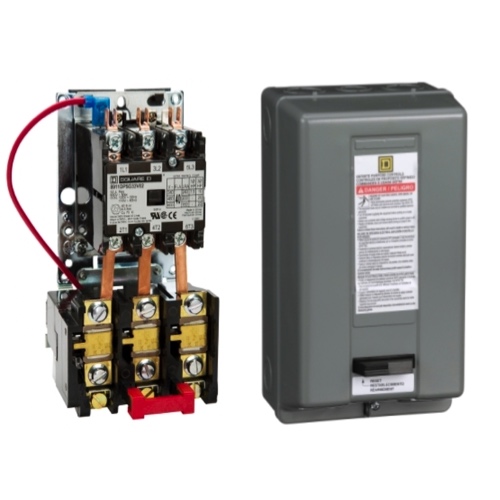Definite Purpose Starters

Electrical control devices specifically designed for motors in HVAC equipment, air conditioning, heating, and ventilation systems provide safe operation. Definite purpose starters are not one-size-fits-all solutions. They are engineered for specific applications, and as a result, they are very reliable in the kinds of controlled environments where you need a motor to startup and shutdown repeatedly without creating a power surge that might harm other components in the power distribution system.
These starters efficiently control motors in commercial and industrial environments where the need for airflow exists, using definite purpose contactors and DP contactors. Their integrated metal mounting plate simplifies installation and maintains the product's stability in high-demand mechanical and electrical environments. The protection offered by the two kinds of enclosures—open and totally enclosed—widens the possible applications. When the starter is installed, it has seamless operation in ventilation and HVAC systems. Even if the motors being controlled are not running, the starters are doing exactly what they are supposed to do: controlling airflow. They have high coil efficiency and precise pole configurations.
More Information about Definite Purpose Starters
Definite purpose starters are widely used in HVAC equipment and air conditioning units, providing safe operation and efficient power management. Their ability to handle varying conditions makes them well-suited for refrigeration and heating applications. Whether you're working with just an ordinary motor for an HVAC system or an industrial motor, the heating and cooling equipment either you or the company you work for is using is more than likely using some kind of definite purpose starter. These devices must meet strict industry standards to ensure long-term reliable operation and must also provide a satisfactory means to control the motor that results in energy savings and also in energy usage optimization.
FAQs
What is the difference between a definite purpose starter and a definite purpose contactor?
While both definite purpose starters and definite purpose contactors serve specific purposes in controlling motors, the key difference lies in the fact that a definite purpose starter is a complete motor control package that includes both a contactor and an overload relay, whereas a definite purpose contactor refers to the standalone switching device used for controlling the motor.
Motor Control Basics
Motor control allows operational control of electrical motors in various environments.
Motor control circuits provide a safe way to operate electrical motors. Back when motor control circuits were in their infancy, it would have been common to see a simple disconnect switch that would be used to turn on and off a motor. Depending on the size of the motor and how much voltage was required, operating this disconnect would have been dangerous, with a very high possibility of arcing or electrocution. Not to mention that when the disconnect was actuated, the large amount of inrush current would have damaged the motor over time.
In today's motor control circuits, there are a few common pieces of hardware.
A circuit breaker is used to protect the motor and any hardware downstream. A contactor and an overload relay are connected together and function in tandem to allow for remote and safe operation of the motor. The contactor functions much like a relay, allowing for a smaller electrical circuit to remotely close the motor contacts, starting the motor. The overload relay is designed to protect the motor in the case of a prolonged overcurrent event. These two devices are wired in series, so that if the overload relay detects an overcurrent event, the contactor will open the motor contacts, shutting off power to the motor.
The other two most common types of motor control hardware are a soft starter and a Variable Frequency Drive (VFD).
Both of these devices function in a similar way to the motor circuit with some added functions. The soft starter is designed to reduce large inrush current to the motor upon startup. This “soft starting” of the motor will prolong its life and allow for safer operation. The VFD performs the soft start functions, but also allows for speed control of the motor. This speed control is critical in many different environments and has made VFDs one of the most common and safe to use motor control circuits today.

